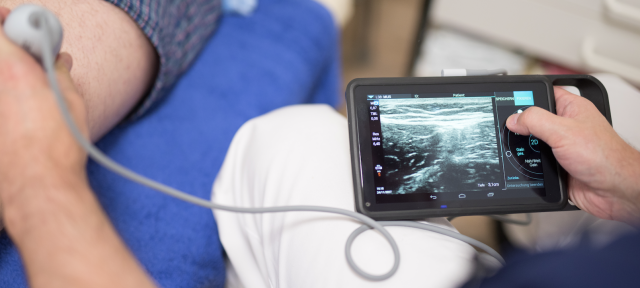
Did you know that Sonosite’s first mission was to create an ultrasound machine that could be carried into battle? The concept was simple: Get treatment to a trauma victim by giving a frontline clinician an ultrasound machine that could be brought to the patient’s side. Now point-of-care ultrasound is used around the world for an ever growing variety of clinical applications and procedures. Here's three user stories of how Sonosite systems have helped clinicians expand the range of what's possible using portable ultrasound.
__
Quick and Acurate Vascular Access
The Children’s Acute Transport Service (CATS) depends on point-of-care ultrasound systems to get quick and accurate vascular access in critically ill children being transferred to specialist treatment centres. Advanced Nurse Practitioner Cathy Roberts explained: “In the UK, paediatric intensive care is provided at centralised units, and children needing this care must be safely transferred there by people with appropriate knowledge and skills. CATS provides a retrieval service for the North Thames area, transferring around 1,200 critically ill children a year from regional hospitals to those offering paediatric intensive care, such as Great Ormond Street, St Mary’s, the Royal Brompton, the Royal London and Addenbrooke’s.”
“Successful vascular access is vital for patient retrievals, and we frequently need to insert central or arterial lines as we stabilise children prior to transfer. I learned how to obtain vascular access under ultrasound guidance through a combination of supervised practice and a Sonosite training course. The training course was excellent, giving me the opportunity to practice different ways of holding the probe in the safety of a non-clinical environment, and discover various tips to help me get the most benefit from using ultrasound at the point of patient care. CATS has two Sonosite Edge® systems that we take with us wherever we go, and these are now used on around 70 to 80 % of our retrievals. Ultrasound has become so much a part of our routine that we would be lost without them.”
__
FAST Scans, AAA Screens, Echocardiography
The Emergency Department at King's College Hospital NHS Foundation Trust is a busy trauma centre dealing with over 400 cases every day. Point-of-care ultrasound has been used in the department of over 10 years, and now forms an integral part of many patient assessment pathways. Emergency Medicine Consultant Dr George Nada explained: “We currently use ultrasound for four main activities: FAST scans, insertion of peripheral lines, AAA screens and basic echocardiography, but it also has applications in many other areas, such as guiding the placement of chest drains, ascetic taps and femoral nerve blocks.”
“We first started using ultrasound in late 2004, just for FAST scans and, approximately 18 months later, for pneumothoraces too. Around the same time, our ICU began using it for central line placement, and we soon followed suit for peripheral lines. We have used point-of-care ultrasound systems for almost all of this time, and the improvements – particularly in image quality – have been very impressive. Our latest system has the added advantage of a large screen which makes it very easy to see the structures of interest during a procedure. Its built-in learning modules are also excellent; new registrars coming into the department can simply work through the tutorials, and don’t need any specific training on how to use the instrument.”
_
Real-time, Scan-along Learning
West Suffolk Hospital in Bury St Edmunds is using the latest generation point-of-care ultrasound system to help intensive care trainees develop their skills in cardiac and lung ultrasound, as consultant anaesthetist Dr Kaushik Bhowmick explained: “My main focus is point-of-care echocardiography, while one of my colleagues is particularly interested in lung ultrasound. We have a strong focus on training – we are the first district general hospital in the eastern region to offer a FICE training course – and wanted a good teaching device for our intensive care trainees. FUJIFILM Sonosite’s X-Porte® ultrasound system is ideal for these purposes. I also use it in theatre if an echocardiogram is required, complementing the Sonosite Edge® that we routinely use for vascular access and nerve blocks.”
“In real-time situations, there may be occasions when a trainee cannot get the view they want and are not sure why. This is where the X-Porte can really help, as the trainee can review the steps in acquiring the image from the teaching module embedded within the machine and find out where they went wrong. Interpretation of the data is even more important, and so we also use the system for seminars, showing the trainees different slices from various patients, and talking through a range of cases. I am also actively promoting FICE accreditation to other consultants, as I think it is an important technique to learn. Ultimately, the more people who can use point-of-care ultrasound, the better it will be for our patients.”
Check Out Sonosite POCUS Case Studies
Want to learn more about how clinicans use point-of-care ultrasound? Check out over 14 case studies on our Evidence page.

